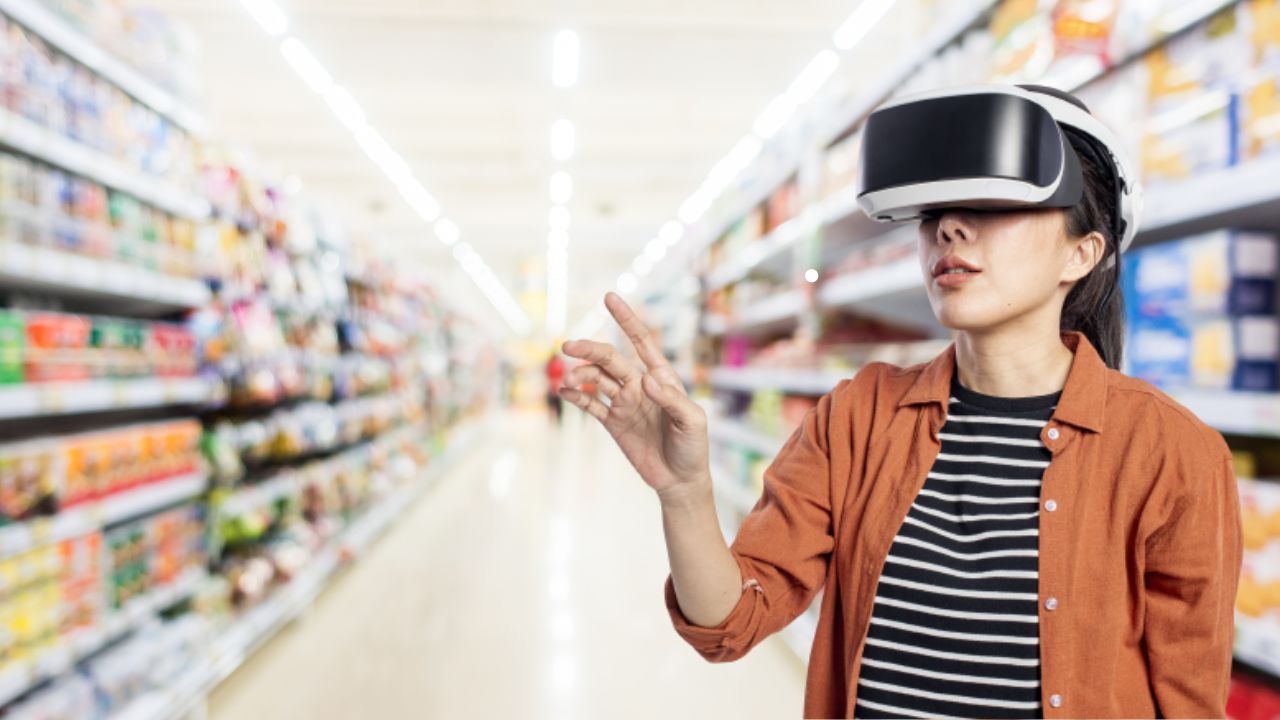
Top 5 Applications of Augmented Reality to Give Your Consumer Goods Brand an Edge – Ivy Mobility
Consumer goods businesses are busy finding newer ways to stand apart from the competition, grab consumers’ attention, and offer an immersive and stimulating experience with their brands. In the context of marketing and branding, augmented reality technology enables consumer goods brands to provide unique digital experiences to engage consumers.
A report on Augmented Reality says that the global augmented reality and virtual reality market clocks in at US$ 5,176M in 2016. It will record a CAGR of 42.2% between 2017 and 2025. Let us look at how the CPG sector benefits from augmented reality (AR) integration across various areas.
Add a Virtual Element to Your Packaging
With the traditional packs, companies can only share a limited amount of information, and customers interpret what they see on the packing. Augmented reality presents an exciting and informative spin on products and their packs. You can add elements to your product packaging that are not evident in the first look. For example, you can add nutritional information, brand history, and many other stories via a simple QR code on the package. The technology also allows you to present your brand to consumers beyond the box and can add insights into the brand identity.
Your marketing campaigns are easy to enhance with digital content on packs such as videos, animations, and others using augmented reality.
Gamification using Augmented Reality
Gamification can help facilitate customer engagement, and when customers take action and build a connection, they draw closer to your brand. Gamification through augmented reality can help you increase consumer involvement through a fun and interactive approach. AR-based games can be added to the product packaging or presented via your mobile. You can even add AR-based games in retail stores to engage and entertain visitors and inform them about your company and its various products.
Augmented reality can go that extra mile for your business through gamification with fun games and trivia. Gamified tools in AR are excellent ways to engage with consumers, boost sales over the long term, and attract new audiences.
3D Product Visualizations
Are you struggling to convey your promotions effectively? Are you not able to garner enough excitement through marketing? Try 3D product visualization powered by the augmented reality that can transform bland in-store experiences of the past.
Augmented reality can demonstrate the benefits of your product in a whole new dimension and improved visualizations. 3D product visualizations through AR will allow your customer to see and configure your products on-screen and enable them to engage with the digital models of your products before purchasing.
A real-to-life retail experience of virtually exploring the product and accessing information before the purchase can help your customers choose products precisely, thus increasing conversions while reducing product return rates.
Augmented reality can also help your sales reps see how products and displays can look in-store on the screen of their mobile device in real-time and with the exact scale. Reps can visualize assets like refrigerators or coolers within store spaces and can easily send augmented images for internal budget approvals and allocations.
Catalogs Powered by Augmented Reality
A ready-to-assemble furniture conglomerate from Sweden has put a spin on furniture shopping with its AR catalog. Customers can use their mobile devices to visualize how a piece of furniture will look in their homes.
Similarly, in CPG, an immersive AR retail catalog can become an explorable map for the shopper to delve into leisurely than a brick-and-mortar store. It also increases the store’s capacity to engage visitors without expanding its physical space.
Customers can view 3D models of products right above their images in AR catalogs, including detailed product information, specifications, and prices. As a customer looks at an AR catalog with the models of your products, they can appreciate their unique features and benefits.
Sales Training via AR
Many businesses have started using augmented reality for sales force training. With AR technology, you can imitate real-world retail experiences your reps may encounter to educate them on tackling those effectively. These training programs will be accessible from anywhere anytime, keep your sales reps’ skills relevant, and be cost-effective in the long run.
To enhance this further, you can allow your sales reps to immerse themselves in real-life situations using VR (virtual reality) headsets and take them on a store tour to test their capabilities and skills in new challenges. And if there were any mistakes during the training, your reps can reset the training program and start over again, helping them gain perfection over time.
What’s next for AR?
It has gained popularity with large corporations, but we are yet to explore the expanse of AR. Leading furniture companies are testing AR features with their furniture catalogs, and some popular makeup brands are using augmented reality to allow their user to test makeup within their apps.
Short-term campaigns can boost sales, and long-term strategies build brand identity. In either case, Augmented reality can change how consumers interact with your products. How far could you take your consumer goods brand with AR? The only limits lie in your imagination. See what’s in store from one of our favorite features.
Published by June 8, 2022 by Ivy Mobility
This content was originally published here.


